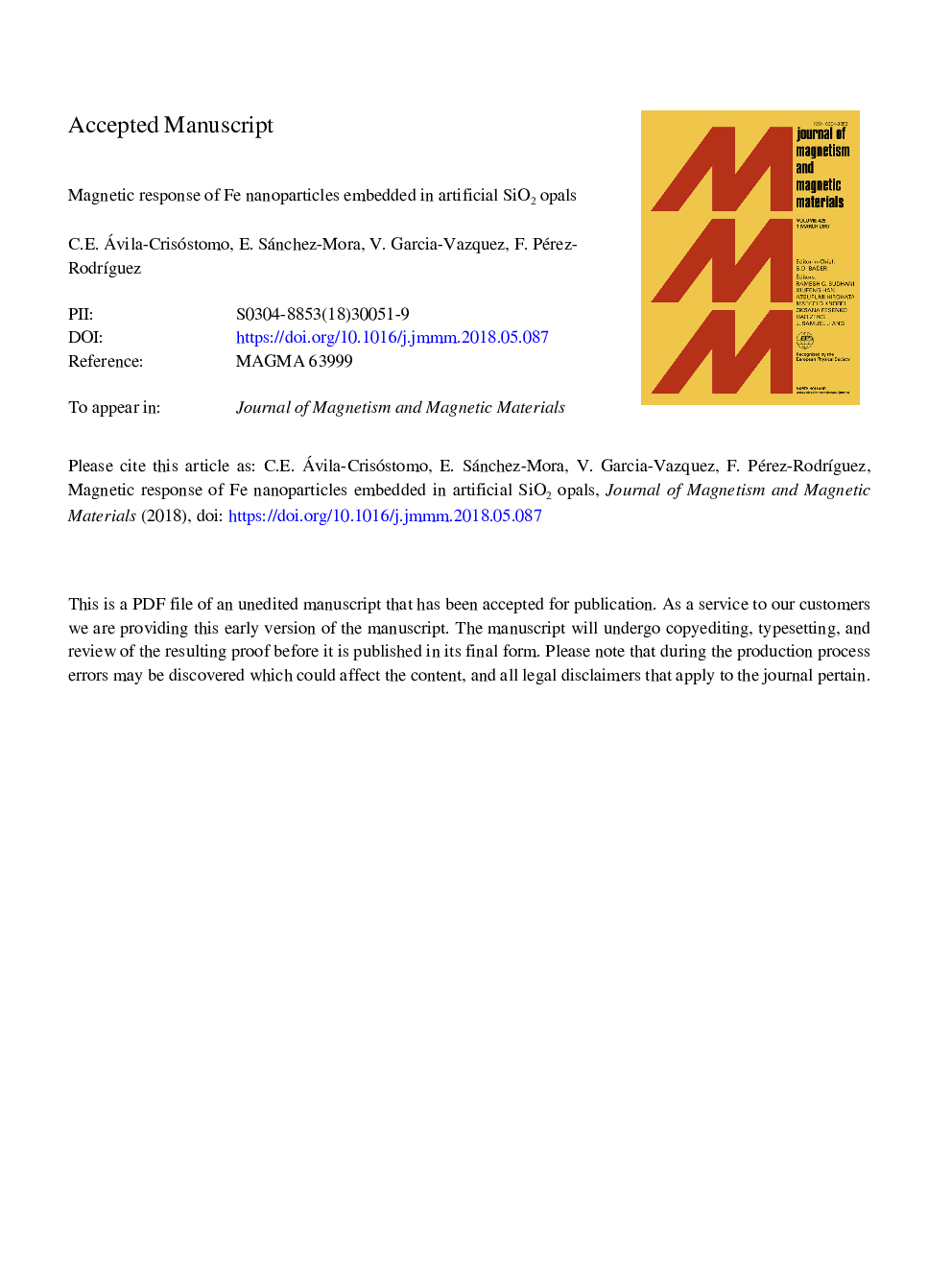| Article ID | Journal | Published Year | Pages | File Type |
|---|---|---|---|---|
| 8152631 | Journal of Magnetism and Magnetic Materials | 2018 | 23 Pages |
Abstract
Applying the Stöber method, silica spheres were obtained and arranged in an fcc lattice. Metallic Fe was introduced into the opal voids. Magnetization curves of the synthesized metallic nanoparticles and of the artificial opals with infiltrated nanoparticles were measured by using the vibrating sample magnetometry (VSM) technique with an applied magnetic field oriented along the [1Â 1Â 1] direction of the opal matrix. Nonlinear Landau-Lifshitz-Gilbert (LLG) equation was numerically solved, in order to reproduce the experimental results. In solving LLG equation we have used Ewald summations to take into account the dipolar interaction between the spatially arranged magnetic nanoparticles. The theory reproduces the general features of the measured magnetization curves. In particular, the S-like shape of the magnetization curves produced by the ferromagnetic response of Fe nanoparticles and the diamagnetic one of the SiO2 opal matrix is well described. The observed small areas of the magnetization hysteresis loops are explained as a consequence of the random distribution of the magnetic anisotropy axes of the Fe nanoparticles. The effect of the dipolar interaction between the magnetic nanoparticles is predicted to be important at magnitudes of the external applied field, larger than the coercive magnetic field.
Related Topics
Physical Sciences and Engineering
Physics and Astronomy
Condensed Matter Physics
Authors
C.E. Ávila-Crisóstomo, E. Sánchez-Mora, V. Garcia-Vazquez, F. Pérez-RodrÃguez,
